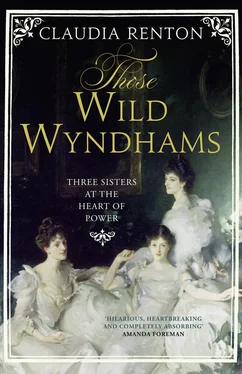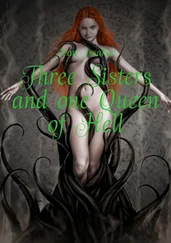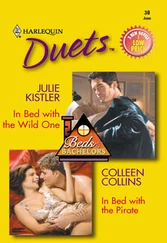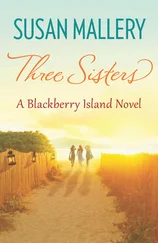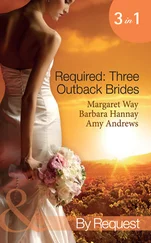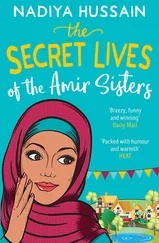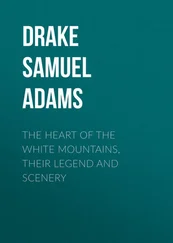When George was born in August 1863, Lady Campbell told Percy he ‘deserved a boy for having so graciously received the girl last year!’ 30In 1865 the Wyndhams had another boy, Guy. With two brothers so close to her in age, Mary was practically a boy herself. She learnt to ride on a donkey given to the children by Madeline when they were toddlers, 31was taught to hunt and hawk by her father’s valet Tommy, and was keeping up with the hounds at just nine years old, even if, on that first occasion, she told her mother ruefully, ‘I did not see the fox.’ 32She kept pet rooks which she fed on live snails, and begged her mother for permission to be taken down a Cumberland coal mine by her brothers’ tutor. 33Some summers, the Wyndhams visited Madeline’s favourite sister, Emily Ellis, at her home in Hyères, the French town at the westernmost point of the Côte d’Azur, which was becoming increasingly popular with the British. There Mary scrambled willingly along the narrow tunnels of the Grotte des Fées into a cavern of stalagmites and stalactites. While the other members of her party sat and ate oranges, she caught ‘a dear dear little soft downy long eared bat’ which, she informed her mother, in her father’s absence she had installed in his dressing room: ‘all day he sleeps hung up to the ceiling by his two hind legs’. 34
High spirited to the point of being uncontrollable, the children exhausted a stream of governesses. At Deal Castle in Kent, home of the Wyndhams’ friend Admiral Clanwilliam, Captain of the Cinque Ports, marine sergeants were deputed to drill the children on the ramparts to tire them out. 35Their arrival in Belgrave Square’s communal garden, clad in fishermen’s jerseys, whooping and hollering on being released from their lessons, prompted celebration among their peers and anxiety among their playmates’ parents. At least one couple instructed their governess not to let her charges play with ‘those wild Wyndham children’. 36In Mary’s stout babyhood Percy nicknamed her ‘Chang’ after a popular sensation, an 8-foot-tall Chinese who entertained visitors – for a fee – at Piccadilly’s Egyptian Hall. Mary grew into a ‘strapping lass’. ‘How well and strong I was, never tired,’ she said in later life, now thin and enervated, recalling wistfully her days as a rambunctious, lanky ringleader, strongest and most daring of the three siblings. ‘I was worse than 100 boys.’ 37
The fairytale had a darker side. Madeline Wyndham concealed beneath her calm, loving exterior a mind seething with dread. She had a paranoid strain capable of rendering her literally insensible from anxiety. A childhood of loss – her father’s death when she was twelve, a beloved elder brother’s five years after that – during the years of the ‘Great Hunger’, the famine that, by death and emigration, diminished Ireland’s population by up to a quarter, 38had a formative effect upon her. She was intensely spiritual, mystical and religious. Her deep foreboding of fate compounded rather than diminished that faith: ‘the memory of death gave to the passing hours their supreme value for her’, said her friend Edith Olivier. 39Olivier had looked through Madeline’s vellum-bound commonplace books to find them crammed with dark thoughts. ‘All strange and terrible things are welcome, but comforts we despise,’ reads one entry. 40‘God to her is, I think, pre-eminently the “King of Glory”,’ said Madeline’s son George in later years, 41but in Madeline’s mind glory came as much from darkness as from light.
When, during the Wyndhams’ courtship, Madeline had confessed to bleak moods, Percy simply denied them. He did not think she was permanently in ‘low spirits’, he said, advising against articulating such thoughts lest ‘the hearer should think them stronger than they are and permanently there when in reality they are not’. For Percy, anxieties that seemed all consuming at the time dissipated within ‘half an hour’, a day at most, like clouds puffed across the sky. 42In fact, Madeline’s volatile moods and her sporadic nervous collapses suggest that a strain of manic depression ran through the family – what George called the ‘special neurotic phenomena of his family’. 43The impact on her children was intense. She invested in them all her apocalyptic hopes, determined they should succeed and prove her family’s merit, convinced the world conspired to bring them down. It is telling that, despite her undoubted love for her mother, Mary described Percy as ‘one of the people – if not the one that I loved best in the world – who was unfailingly tender & who loved me more than anyone did and without whose sympathy I have never imagined life’. 44
The Wyndhams’ tribe naturally split between Mary, George and Guy, the trio born in the early 1860s, and the ‘little girls’, Madeline (known as ‘Mananai’, from what was obviously a childish attempt to pronounce her name) born in 1869 and Pamela in 1871. 45As a consequence of Lord Leconfield’s death in 1869 their early childhoods were also markedly different.
Leconfield, intensely disliking his heir Henry, left everything that was not tied up in an entail to Percy. He created a trust for Percy and his heirs of a Sussex estate (shortly afterwards sold to Henry for £48,725 8s 10d), 46land in Yorkshire, Cumberland and Ireland, £15,000 worth of life insurance and £16,000 worth of shares in turnpike roads and gas companies, and made provision for the trustees to raise a further £20,000 from other Sussex land. Percy received outright the family’s South Australian estates (bought by Percy’s maverick grandfather, the third Earl of Egremont, Turner’s patron and three-times owner of the Derby winner, for his estranged wife); most of the household effects from East Lodge, a Brighton family property, including thirty oil paintings and all the plate; the plate from Grove, another family property; and the first choice of five carriage horses. Leconfield’s will was a calculated, devastating snub to Henry. For a while, the Wyndhams continued to visit Henry and his wife Constance at Petworth, but soon enough the brothers had a spectacular row over the port after dinner. The resulting estrangement between the families lasted for almost a decade, 47despite all the attempts of their wives, still close friends, to heal it.
Leconfield’s death provoked the Wyndhams’ move to Isel from Cockermouth Castle, which now belonged to Henry; and his will made them rich. Percy and Madeline now commissioned Leighton and his architect George Aitchison to decorate Belgrave Square’s entrance hall. The Cymbalists was a magnificent mural painted above the central staircase – five life-sized, classical figures in a dance against a gold background. Above that was Aitchison’s delicate frieze of flowers, foliage and wild birds in pinks, greens, greys and powder blue. Even the most unobservant visitor could see this was an artistic house.
Shortly after Leconfield’s death, Percy visited his sister Blanche and her husband Lord Mayo in India, where Mayo was Viceroy. (Mayo had previously served as Ireland’s Chief Secretary for almost a decade, and it was Blanche who had introduced Percy to Madeline, when Percy visited them in Ireland.) 48While Percy was abroad, Lady Campbell, in her seventies, was suddenly taken ill. Madeline Wyndham hastened to Ireland with newborn Mananai, Guy and Horsenail, leaving Mary and George, with their governess Mademoiselle Grivel, at Mrs Stanley’s boarding house in Keswick, Cumberland. ‘… I am so sorry that dear Granny is so ill for it must make you so unhappy. George and I will try to be very good indeed so as to make you happy,’ Mary wrote to her mother. 49Lady Campbell died shortly afterwards, and Madeline made her way back to her elder children: ‘so glad I shall be to see you my little darling … you were so good to me when I was so knocked down by hearing such sad news’. 50Almost precisely upon Madeline and Percy’s reuniting, Madeline fell pregnant. Pamela Genevieve Adelaide was born in January 1871, at Belgrave Square like all her siblings.
Читать дальше
